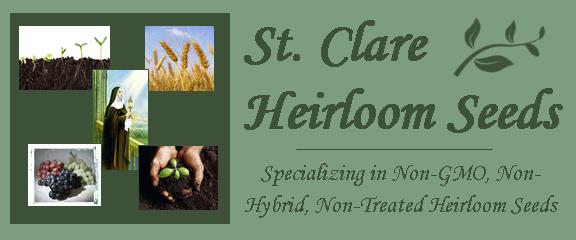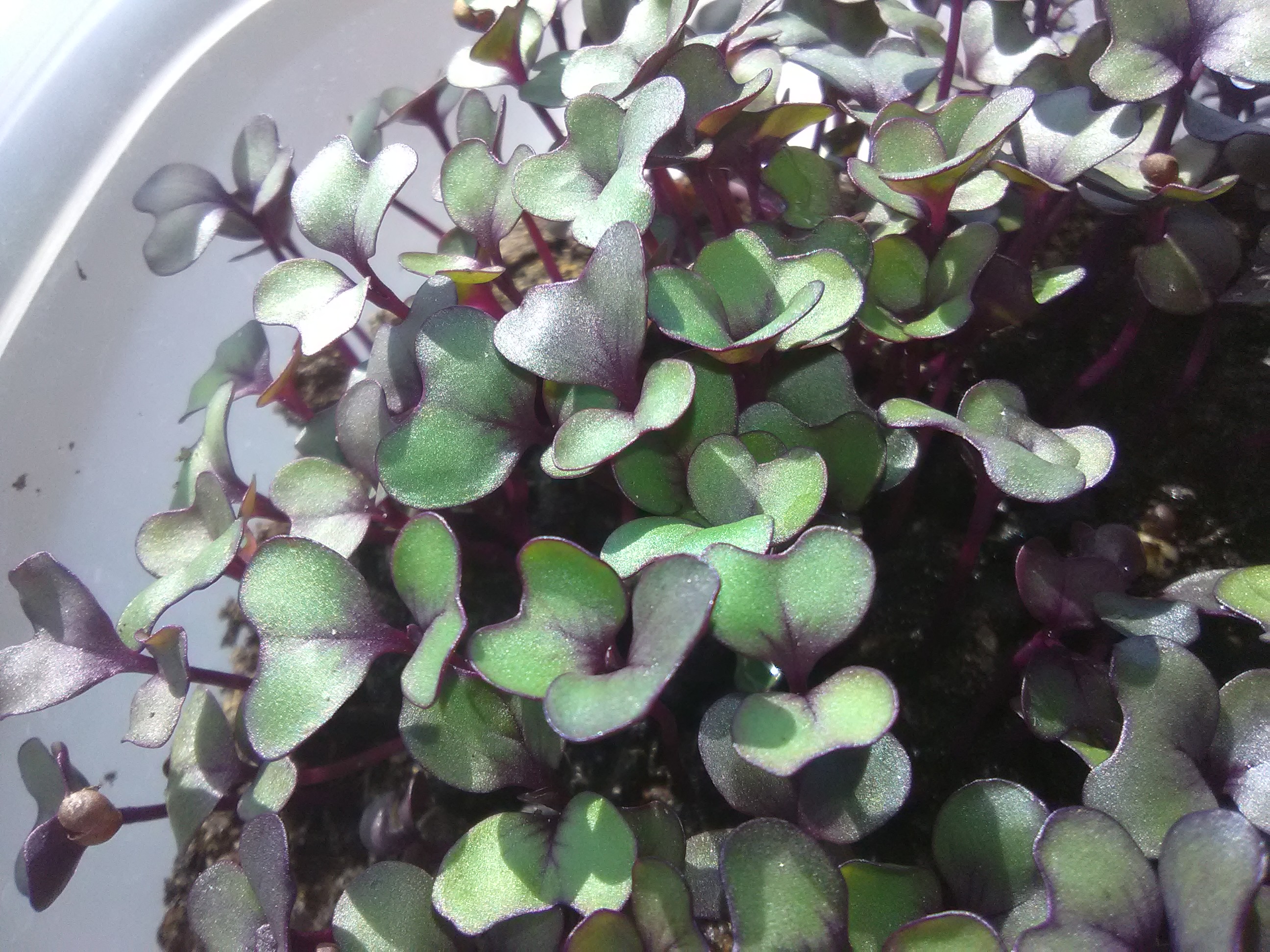Microgreens first appeared in the 1980s in upscale California restaurants, prized for their fresh flavor and striking appearance. What began as a fine dining trend has since taken root in kitchens and home gardens everywhere. Though tiny, these young greens are remarkably nutrient-dense—often containing more vitamins and minerals than fully grown vegetables. Harvested just 7 to 21 days after sprouting, when they reach 1 to 3 inches tall, they’re not only flavorful and beautiful, but also the impressive health benefits of microgreens make them a smart choice for anyone looking to add both nutrition and color to their plate.
Table of Contents
Microgreens are Incredibly Nutritional
The main reason microgreens are so popular is because of their delicious flavor and extraordinary nutrient content. They are absolutely loaded with enzymes, antioxidants, potassium, iron, zinc, magnesium, niacin, folic acid, calcium, selenium, Omega fatty acids and copper, and rich in vitamins A, C, E and K, lutein and beta-carotene. Take care when selecting your microgreens, as research has shown that while some contain nutrients up to 40 times more than mature plants, some actually have less than their mature counterparts.
Click Here to purchase Microgreen seeds!
Just as the nutrients are concentrated in microgreens, their flavor is bold and memorable—often far more intense than their full-grown counterparts. Depending on the variety, the taste can range from mild and earthy to sharply peppery, slightly bitter, or even surprisingly sweet. Imagine the tang of purple radish and the bite of garlic and onion, mingling with the gentle freshness of celery, carrot, and squash. Add in sunflower, broccoli, and spinach microgreens, and you’ve got a vibrant medley that bursts with flavor—like a garden salad distilled into a single, dazzling mouthful.
These tiny greens don’t just taste amazing—they offer the full health benefits of microgreens in every tender bite, making them a perfect addition to your meals whether you’re garnishing a plate or building a fresh, nutrient-rich dish from the ground up.
10 Surprising Health Benefits Of Microgreens
Some of the numerous health benefits of Microgreens are:
- Lower risk of heart disease: The antioxidants in microgreens may lower cholesterol and triglyceride levels
- Lower risk of Alzheimer’s disease: Again, the high concentration of antioxidents is extremely beneficial to the brain
- Improve digestion: The enzymes maintain a healthy balance to aid digestion
- Stronger bones and teeth: The concentration of vitamin K helps you to absorb calcium more efficiently, leading to healthier bones and teeth
- Clear complexion and improved eyesight: The high levels of vitamin A produce retina pigments for your eyes, improving vision, and combined with vitamin C will repair skin damage, prevent wrinkles and help your skin to glow beautifully and delay aging
- Increase hair growth: The vast level of nutrients strengthen hair roots and increase blood circulation, increasing hair growth
- Maintain body weight: Radishes contain raphanin, which balances thyroid hormones to maintain the perfect weight
- Maintains healthy blood sugar levels and fights diabetes: The amazing levels of antioxidants balances sugar levels in cells and can prevent diabetes (fenugreek microgreens have been shown to be the most beneficial for balancing blood sugar)
- Prevent Cancer: The compounds in microgreens are a powerful protection from cancer; but keep in mind, broccoli microgreens are astonishingly 10 to 100 times more potent in fighting cancer than more mature broccoli.
- Fighting Auto-Immune Disease: The US has had skyrocketing rates of autoimmune disease affecting a whopping 24–50 million Americans. More people have autoimmune disease than heart disease and cancer combined, with autoimmune disease in the top 10 causes of death in women under 65. Autoimmune disease is linked to compromised immune systems, which attacks its own tissue. These patients spend a fortune on healthcare and medication, but their health never improves.
Obesity is rising dramatically as well, resulting in higher rates of diabetes, heart disease and cancer. Plant-based foods and their lower calories are known to reduce both weight and the risk of these diseases, and since microgreens reduce inflammation and have much higher concentrations of nutrients, they are remarkable for enhancing your health.
Many people with these health issues are turning to microgreens to boost their health, as these delicious greens contain high levels of antioxidants which fight harmful free radicals that damage tissue in our bodies, and strengthen the immune system and detox the liver. Just think, these mighty greens can help you feel younger, slimmer, healthier and more energetic!
Discover What Gardeners Are Saying About Our Seeds!
Discover Microgreens Amazing Taste Sensations!
Some ways to include microgreens in your diet is to incorporate them into smoothies, sandwiches, soups, salads, pasta, omelets, pizzas, seafood, meat and curries. Best used raw, these delicate greens add pizzazz to any dish, and will add a colorful touch as a garnish. Since the flavor is so intense, microgreens can save you a lot of time and simplify meal prep by easily mixing with vinaigrettes for dressings and sauces, and for accents and toppings.
If you want your microgreens to be even more potent, using extra-virgin olive oil or some other healthy oil in your recipes will boost the nutrients. Since microgreens are combined with a wide variety of produce, you can include the less tasty vegetables, such as Swiss chard and beets, but still enjoy an exquisite meal with all the health benefits!
Safe Alternative to Sprouts
These robust greens are fast becoming the newest health trend, but don’t confuse microgreens with sprouts. Microgreens are grown in soil, need a lot of sunlight, and are harvested at around 1 to 3 weeks, while sprouts are newly germinated seeds usually grown in water, and harvested after just 2-3 days. Sprouts have recently been strictly regulated, as they are more prone to contamination by Salmonella and E. coli, causing dangerous outbreaks of illness. Since they are grown in warm water, with low light, and never actually planted, the dark, moist environment is unfortunately perfect for growth of toxic bacteria.
Concerned with liability, restaurants are turning from sprouts to microgreens, which are much safer, as they are grown in soil, rather than water, and in bright light and fresh air. In addition, since only the leaf and plant are consumed, the chance of bacteria growth is much smaller in microgreens. In fact, many grocery stores have discontinued selling sprouts, and started carrying microgreens instead. So skip the sprouts, be adventurous and give microgreens a chance!
Varieties of Microgreens
There are many different kinds of microgreens; some of the most popular are amaranth, arugula, basil, beets, broccoli, cilantro, chives, kale, and radish. Other varieties of produce grown as microgreens include:
- Amarylilidaceae family: Garlic, leek, and onion
- Amaranthaceae family: Amaranth, beets, quinoa, spinach, and Swiss chard
- Apiaceae family: Carrot, celery, dill, and fennel
- Asteraceae family: Chicory, endive, lettuce, mustard greens, and sunflower
- Brassicaceae family: Arugula, Bok Choy, broccoli, cabbage, cauliflower, kale, radish, and watercress
- Cucurbitaceae family: Cucumber, melon, and squash
- Herbs: Basil, chives, cilantro, and parsley
- Cereals and legumes: Beans, chickpeas, lentils and even cereals such as barley, corn, oats, and rice, oats
Click Here to purchase Microgreen seeds!
Conclusion

As popular as microgreens have become, they are still outrageously expensive, difficult to find and quickly lose nutrients and flavor once they are harvested. Your best option is to skip the high prices and grow your own, as these super greens grow rapidly and easily. Even if you have never gardened before, microgreens are a fun way to start! Seeds can be grown in pots on your windowsill, greenhouses or garden beds, and can be grown in soil or on a special growing mat.
Isn’t it time to order microgreen seeds from St. Clare Heirloom Seeds and add zest to your cuisine, simplify meal prep and dramatically improve your health?
FAQ
What are microgreens, and how are they different from sprouts?
Microgreens are young vegetable greens harvested just 7 to 21 days after sprouting, when they’re about 1–3 inches tall. Unlike sprouts, which are grown in water and harvested earlier, microgreens are grown in soil and sunlight, making them safer, more flavorful, and far less prone to bacterial contamination.
Are microgreens really more nutritious than regular vegetables?
Yes, in many cases microgreens are far more nutrient-dense than their mature counterparts. Some varieties contain up to 40 times more vitamins, minerals, and antioxidants—especially rich in vitamins A, C, E, and K, along with calcium, iron, and folic acid.
How can microgreens improve my health?
Microgreens offer a wide range of health benefits: they support heart and brain health, help balance blood sugar, improve digestion, strengthen bones and teeth, boost hair growth, protect eyesight and skin, and even reduce the risk of cancer and autoimmune disease thanks to their high antioxidant content.
Are microgreens safe to eat?
Absolutely. Unlike sprouts, which are grown in warm, damp environments that can harbor bacteria, microgreens are grown in clean soil with sunlight and airflow, greatly reducing the risk of contamination. Only the leaves and stems are eaten, not the seed.
What are the best ways to eat microgreens?
Microgreens are best enjoyed raw to preserve their nutrients and flavor. Try adding them to salads, sandwiches, smoothies, soups, omelets, or pasta. They also make colorful garnishes and can be blended into dressings, sauces, or even served on top of meats and seafood.
What do microgreens taste like?
The flavor varies by variety—some are mild and earthy, while others are peppery, tangy, or even sweet. For example, radish and arugula microgreens have a bold bite, while sunflower and carrot types are more mellow. Their concentrated flavor adds zip to any dish.
Can microgreens help with weight loss or diabetes?
Yes. Microgreens, especially fenugreek, can help regulate blood sugar levels and support healthy weight. Their nutrient-rich, low-calorie profile and anti-inflammatory properties make them ideal for those managing diabetes, thyroid balance, or looking to shed a few pounds naturally.
Are there different types of microgreens I can grow?
Yes! Microgreens come from a wide variety of plants—broccoli, kale, radish, beet, basil, parsley, onion, fennel, and even grains and legumes like oats, barley, lentils, and chickpeas. Each variety brings its own flavor, texture, and nutritional profile.
How do I grow microgreens at home?
It’s surprisingly easy. You can grow microgreens in a shallow tray or even a recycled container on your windowsill. They need good-quality soil (or a growing mat), sunlight, and light watering. Most are ready to harvest in just 1–3 weeks—perfect for beginners!
Why are microgreens considered a “superfood”?
Because they deliver powerful nutrition in a tiny package. Their concentrated levels of enzymes, vitamins, and minerals can enhance energy, fight disease, support immunity, and even help you look and feel younger—all in just a handful of tender leaves.














Thank you for your article on microgreens and the differeance between them and sprouts. I will be trying them really soon and will order them from you.